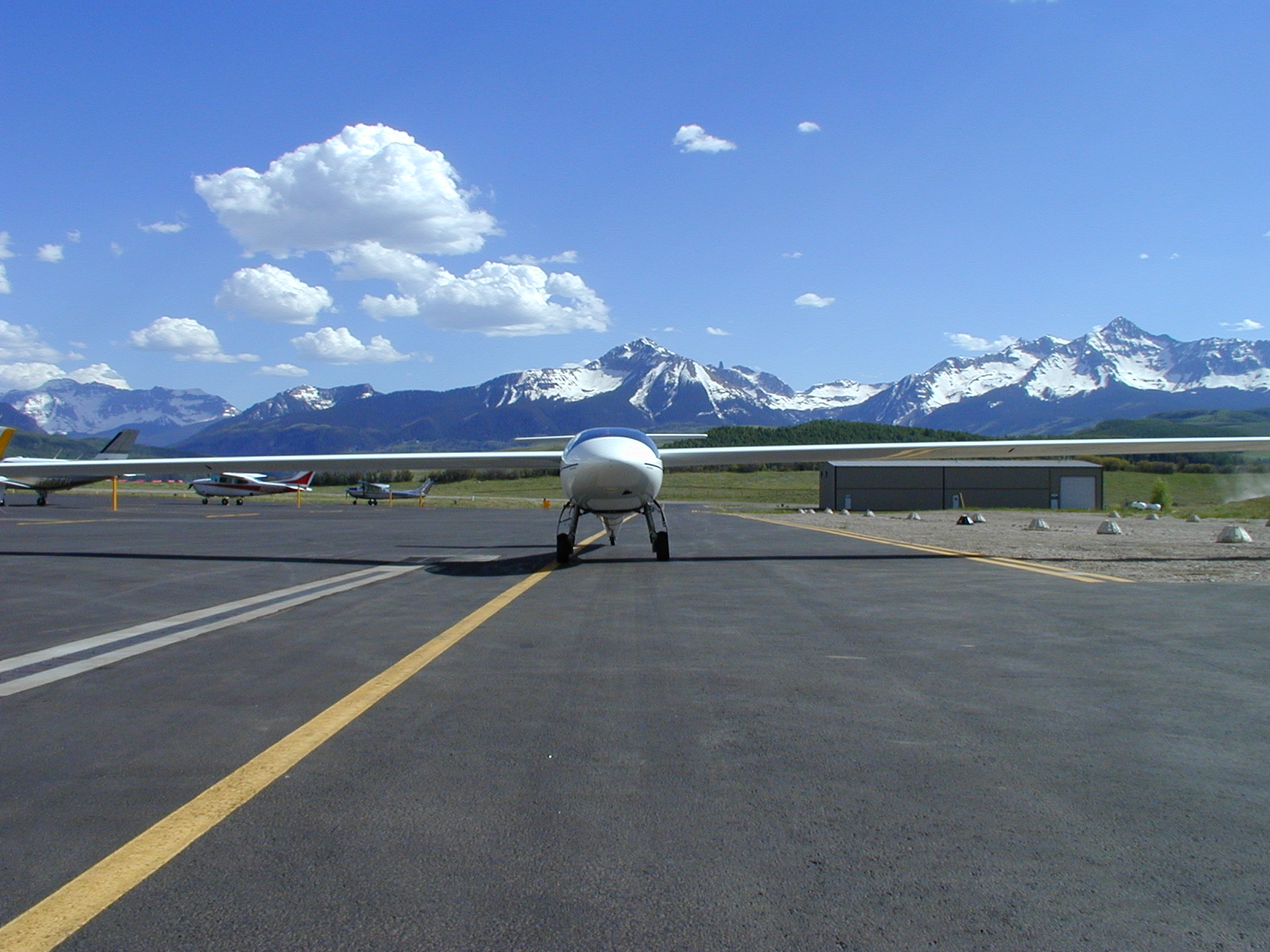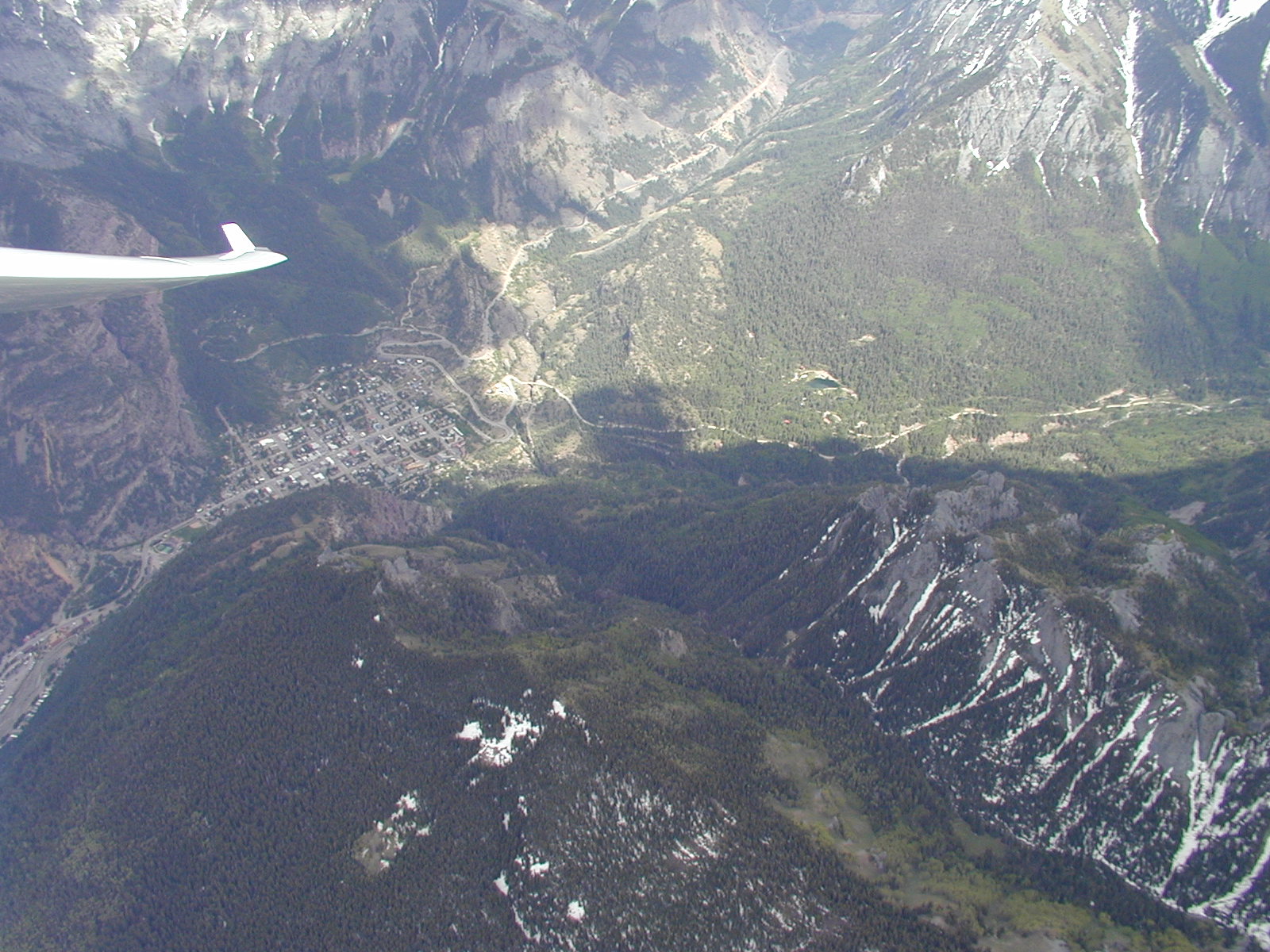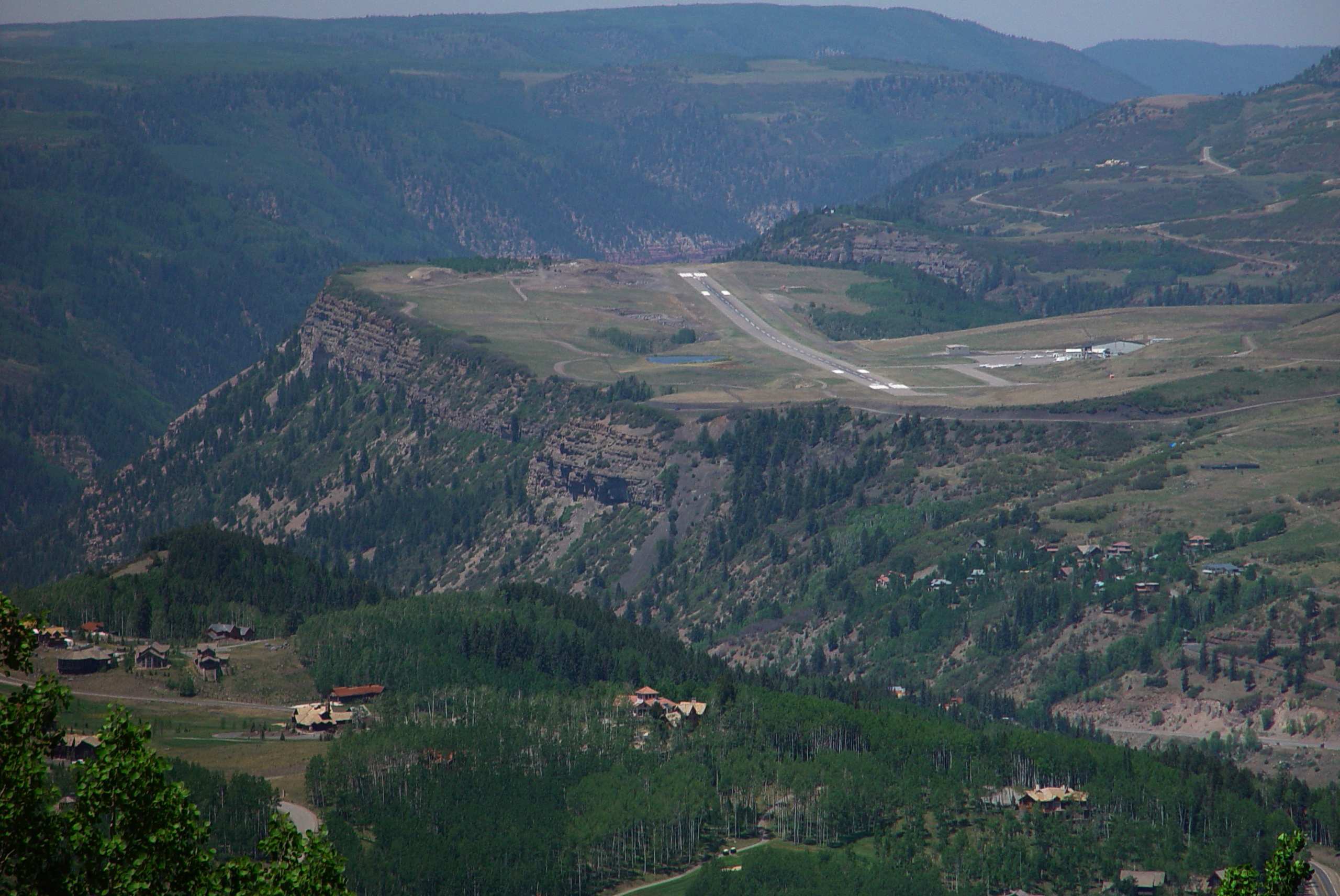
Note: All photos can be seen at higher resolution by downloading. In most browsers this is accomplished by right-clicking on the photo and then selecting an option such as "Save Picture As" (Windows) or "Save Image to" (Mac OS X). With a single button mouse, control-clicking (holding the CTRL key while clicking) usually is equivalent.
Thin air, turbulence, and gusty winds can make all mountain airports challenging for takeoff and landing, but Telluride, Colorado is uniquely demanding. At 9,080 feet above sea level, Telluride is the second highest commercial airport in the United States. The air is thus thinner than all but one other mountain airport, creating two problems. When an engine gulps thinner air it puts out less power and the plane accelerates more slowly to takeoff speed. Compounding this problem, thin air provides less lifting force on the wing so you need a significantly higher takeoff speed than at sea level. Between these two problems, you can run out of runway before you reach takeoff speed, with obvious, dire consequences. For this reason, pilots must consult tables determining the required runway length before undertaking a flight. Fortunately, my Stemme's engine is turbocharged, so it compresses the thin air and overcomes the first problem. It still requires a higher takeoff speed at Telluride, but the runway is more than adequately long thanks to the turbo.

The picture above shows my Stemme at Telluride on June 4, 2004, at the furthest point of a soaring safari that took me from Hayward to Tonopah NV, to Flagstaff, to Santa Fe, to Telluride, to Ely NV, then back home to Hayward. This was a solo safari, and I was traveling alone between these locations.

This picture was taken earlier the same day as I approached Telluride on the flight from Santa Fe. The mountains were impressive but challenging, particularly with the overcast cloud cover. Mountain weather can change extremely rapidly in a short distance or a short time. The bright, sunlit day in the first picture on this page was taken only about 40 miles from and 4 hours later than the one above with a gray, forbidding sky. Even here you can see local areas with very different weather in the patches of sunlight.

After landing at Telluride and taking a rest, I took off again for a local soaring flight with a friend who lives here. This picture was taken a few miles east of Telluride.

Also taken during the local soaring flight at Telluride, this picture shows the town of Ouray, Colorado, a little over 10 miles east-northeast of Telluride.
This was my second trip to Telluride, with the first having been two years earlier in June 2002. Also part of a soaring safari, that time I was part of a squadron of four Stemmes instead of flying alone. The remaining three pictures were all taken during that earlier visit.

Pictured above is one of the other Stemmes from the June 2002 soaring safari to Telluride. Terry Honikman is flying and John Morgan took the photo.

This photo, taken from the ground on a hike, shows two other challenging aspects of the Telluride airport. First, the runway slopes from either end toward the center. Taking off, a plane is likely to lift off on the downhill run and then "land" again when it runs into the uphill part of the runway. More critically, the airport is built on a mesa so even relatively light winds from the wrong direction can create turbulence that would make takeoff and landing dangerous. On the day the safari arrived at Telluride, the winds were 12 kts out of the southeast (the wrong direction!). Since normally even a direct 12 kt crosswind would be no problem for a Stemme, we might have stumbled into trouble, but fortunately our local host "Glider Bob" Saunders warned us of the problem and we diverted to Montrose airport. This necessitated his driving two hours round trip to pick us up, but was worth the added safety. The next photo shows another Stemme on the safari, piloted by Bud Schurmeier, landing the next day and gives some idea of the challenge even when the winds do not create a hazard. Both photos are courtesy of John Morgan.

Return to Soaring Photo Links Page
Return to Martin Hellman's Home Page